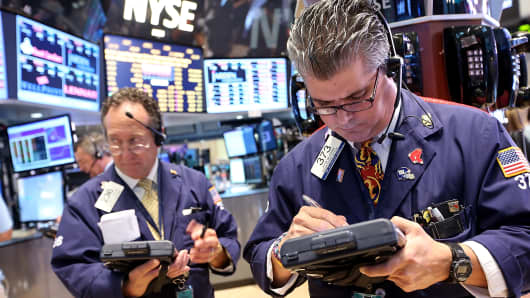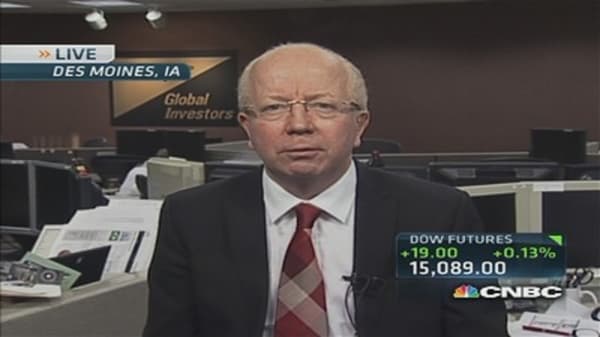What's it mean? It means the market is having a difficult time adjusting to the taper. The market is building in a higher risk premium than fundamentals would dictate.
What will change this? It's a maturation process—the market has to find a level on its own.
One thing's for sure: If we continue to have these poor growth outlooks and sub-par inflation, the bond market will have to readjust itself.
In the meantime, small events like Jackson Hole on August 22-24 take on greater significance, despite the absence of Mr. Bernanke and the ECB's Mario Draghi. Some guidance—any guidance—is what traders crave to get closer to the "right" yield.
Elsewhere:
1) It may be a lousy week for stocks, but investors keep putting money into the market. Stock mutual funds see their 32nd straight week of inflows, raking in $2.56 billion in the week ended Wednesday, according to Lipper. However, there were $1.6 billion in outflows from equity ETFs. Bond mutual funds also attracted money, gathering $1.25 billion in the past week.
(Watch: Santelli Exchange Extra: The great 'inflow')
2) Even the higher-end retailers are having a tough time. Nordstrom reported slower than anticipated same-store sales (4.4 percent, below expectations of 6.8 percent) and Q2 earnings of $0.93, below expectations of $0.88. The company also lowered its sales and earnings guidance for the second half. Even the anniversary sale in July generated only low single-digit gains.
Stifel, in a note to clients, summarized the current standard line on the disappointing retail earnings: "We believe that the consumer has de-emphasized their apparel consumption as we have observed a renewed interest in 'big ticket' consumption, including cars, vacations and homes."
3) Gold rally: what's behind it? Lots of confusion about the sharp jump in gold yesterday, with many explanations. Regardless of yesterday's rise, everyone believes there has been strong physical demand for gold, particularly in China, where there has been an improvement in the economy. This has offset the weaker holdings from gold ETFs. Tensions in Egypt and reports of record high short contracts on Comex may also be a factor.
George Gero, a veteran gold trader at RBC and an old friend, also offered this explanation: High rates have caused lease rates to jump for those who need to borrow gold in order to hedge. Miners typically borrow gold, then sell the forward month and replace it with future production. Their cost for borrowing has risen. Those borrowing gold have two choices: cover their shorts, or pay higher rates. Some appear to be covering shorts.
Still, it's been tough for gold recently. In a report issued yesterday, the World Gold Council noted demand for gold hit a four-year low in the second quarter, although demand for physical gold remained strong. JPMorgan put a note out this morning: "Gold and the Denver play: Gold Shrugs Off the Paulson Sale; Buy the Bounce," which argued that Paulson & Co. had cut its exposure to the gold ETF in half, but it had not hurt the market and that this was a time to buy gold.
4) U.S. lags global markets this week, a week when emerging market countries did a bit better.












